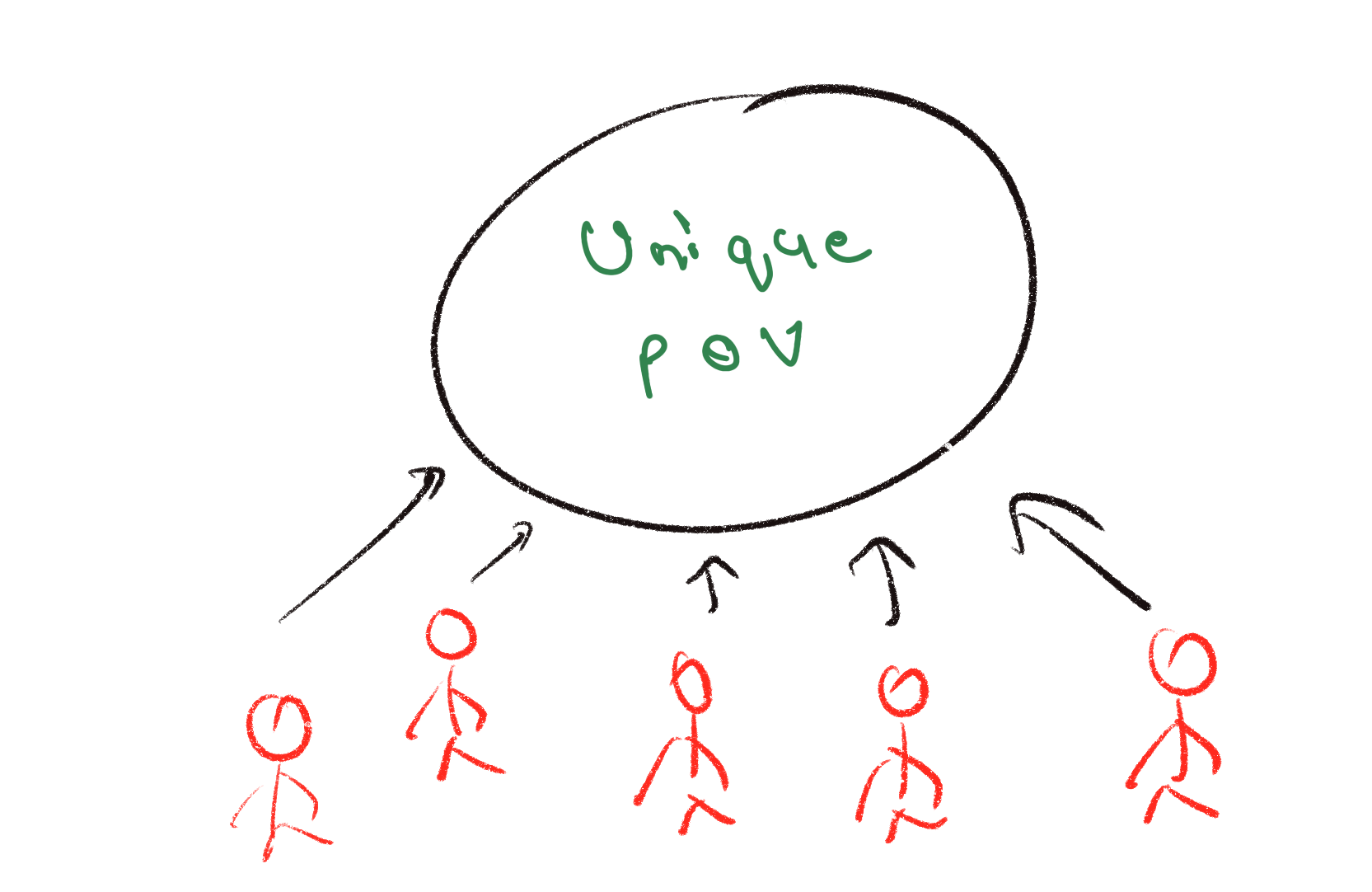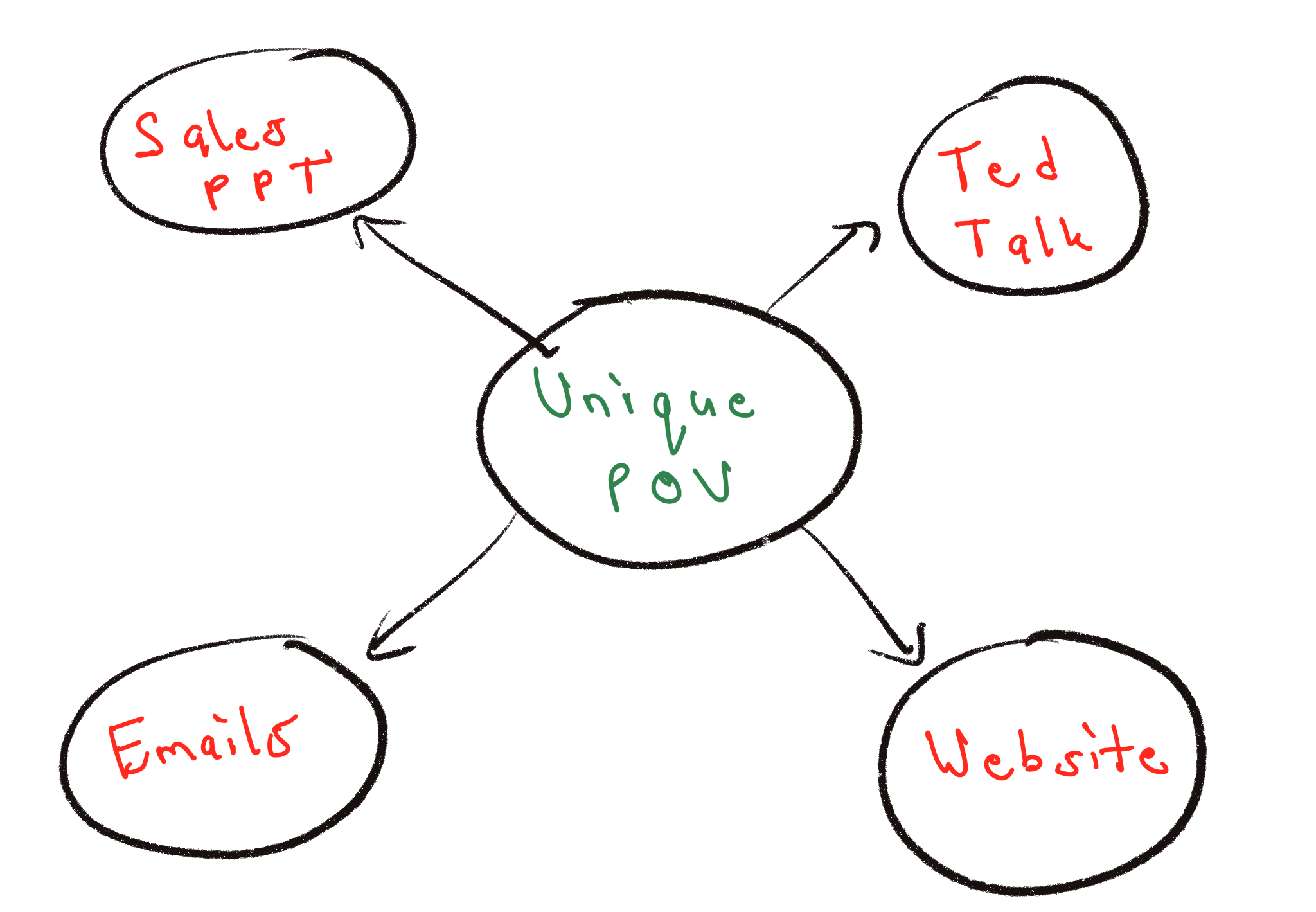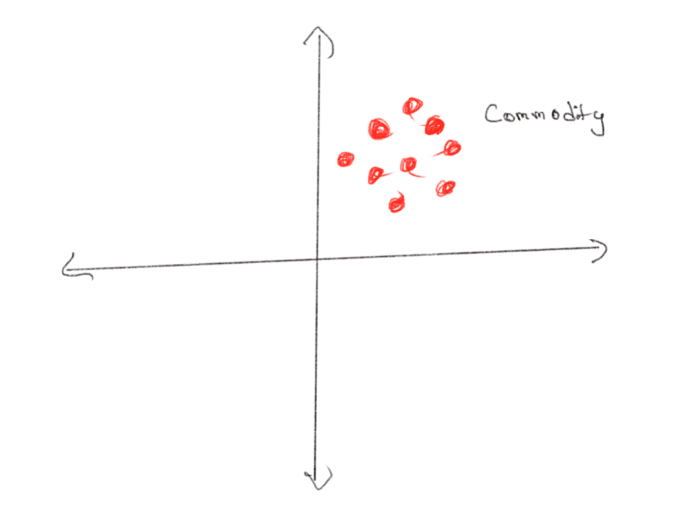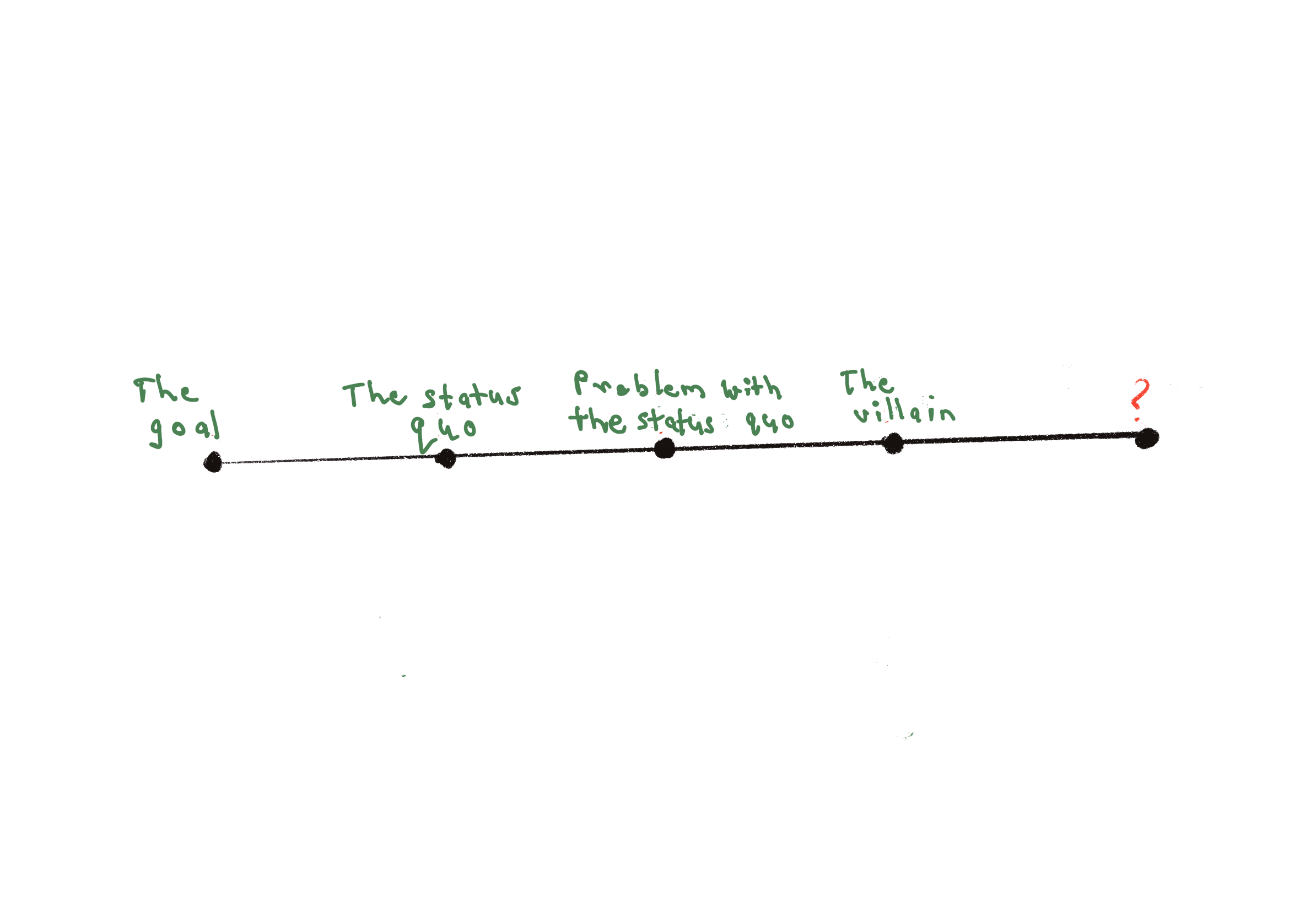What do Superman and Deadpool have in common? Umm, probably nothing.
(Except for the fact they both have superpowers, of course.)
Superman is noble, righteous, and avoids unnecessary violence. He only speaks when he needs to, and when he does, it’s always respectful. Deadpool, on the other hand, is… well, crass, violent, and completely unpredictable.
Even though they both are opposites of each other, both have their own die-hard fan bases.
Why?
Because both have a unique point of view—a specific narrative that sets them apart. Their narrative attracts a certain kind of person.
Experts and consultants need a unique narrative as well. This narrative separates us from the noise out there. It draws the right audience toward us, enrolling them in the journey we’re on.

This narrative seeps into everything we do. Whether you’re giving a sales presentation, a TED Talk, or even just writing an email, this narrative remains at the core of everything you do.

Building this narrative, however, can be quite a task. Overthinking and self-doubts are the most commonly faced hurdles.
The following questions are designed to help you navigate this uncertainty. This framework is inspired by lessons from mentors like Jay Acunzo and Billy Broas. I’ve also added my own spin to it.
Hang tight. This is going to be a wild ride.

Step 1: The Goal (of the Audience)
We start by acknowledging the goals of the people we want to serve. Empathy is key here. We need to understand where the audience is right now and what they’re trying to achieve.
At this point, we’re not asking them to change their goal. We’re not saying, “That’s not the right goal. You should focus on something else.”
Nope. We merely understand their desires.
So, we might say something like:
“We all want to achieve X, right?”
The goal here is simple – get them nodding along.
Let’s take an example. Hypothetical, of course.
Bob has a problem
Bob is a Productivity Coach for small business owners. He is just starting out and is overwhelmed with all the competition. There are so many productivity coaches out there.
“How will I stand out?” he wonders.

Bob starts with the audience
At this point, Bob is not trying to be unique. He merely focuses on the audience and their goals. Bob’s audience (small business owners) are often overwhelmed and want to get more done. If Bob was giving a talk at a conference, he would probably say, “We all want to be super-productive and feel the satisfaction of getting more things done, right?”
Is the audience nodding along? Excellent.

Time to move to the next step—the Status Quo.
Step 2: Status quo
The status quo answers the question – How are they currently trying to achieve this goal?
Here, we consider the different methods and strategies the audience uses to achieve their goal. The status quo describes their current reality… something that we will attack later. For now, however, we are simply bringing them out in the open.
Again, the goal is to get them to nod along and say – “Yes, yes! This is exactly what I am doing right now to solve my problem.”

Bob, the Productivity Coach, might say
“How do you become more productive? You create Excel sheets. Or download another productivity app and squeeze your massive to-do list into it. Or perhaps you turn to experts like David Allen and refer to their books, blogs, and other resources… all to accomplish more and be more productive.”
Are they nodding?
Awesome.
Notice that till now, we have not mentioned anything about ourselves or our big idea. We have neither criticized their goals nor blamed the methods and strategies they use to achieve them.
We are simply being empathetic to their current situation.
Okay. Now’s the time to take out the big guns.
Step 3: Problem with the status quo
This is where you can start letting a bit ranty. The frustration you have been holding back?
Yeah, it’s time to let it loose.
What do you think is broken in their approach? Why are the current methods not working?
But it goes beyond that.
It’s not that the current methods are not working.
It’s that their current strategies are making things worse.
If anything, they are taking them away from what they want to accomplish.
We are further building empathy by bringing out the problems with the status quo. The key is to make them feel – “He gets me!”

Bob might say:
“Extensive to-do lists, fancy Excel sheets, and all these productivity resources give us short-term wins. They make us feel like we’re progressing toward our goal, but in reality, they overwhelm us. They create the illusion of progress, but what they’re doing is like putting a Band-Aid over a deeper wound. Instead of solving the core problem, they prevent us from seeing it.”
“It’s like running on a hamster wheel. We’re moving and making progress, but we never experience the feeling of accomplishment or satisfaction. If anything, we still feel like we’ve achieved nothing.”
“Standard productivity advice often just makes us more anxious.”
Bob can then ask, “Is this the life we want?”
Step 4: The Villain
This is the pivotal moment.
The audience’s current approach isn’t the villain… those methods are merely the villain’s sidekicks. They cause harm, but only because the villain sends them out to fight. We gotta banish evil from its source.
So, who is the real villain?
The real villain is the deeply rooted belief held by the audience.
This belief drives them to use ineffective strategies that do more harm than good, often without them even realizing it.

Our job here is to confront and “kill” this villain. Or, if you prefer a less graphic approach, our job is to change this misbelief.

Over to Bob
Bob has identified the strategies of the audience and what harm they cause. But what is the root belief? What does Bob’s audience, a small business owner, believe that makes him excessively use Excel sheets and productivity apps?
Perhaps they believe
“Life is about hustling. If I slow down and relax, I’ll fall behind, and my competition will surpass me. If I don’t complete the 10 things on my to-do list, my business will fail. Getting more done is the only way to succeed.”
This is where Bob steps in and challenges this belief. By doing so, he sets himself apart from other productivity coaches.
How?
All the other productivity coaches, or at least most, seem to reinforce the hustle culture. As you will see in the next step, Bob is going the other way. While the other coaches decide to zig, Bob chooses to zag.
Bob might say – “What if building a small business isn’t about hustling?”
The question creates tension.
It grabs the audience’s attention and challenges a fundamental belief they have always held.
If life isn’t about hustling, then what is it about?
Is there a way to build a thriving business without the constant grind?
They can’t wait to hear the answer.
Step 5: The Big Idea
It is at this point that you reveal your big idea. Your unique POV directly challenges the villain. The villain is the old belief, and your unique POV is the new belief you want your audience to embrace.

Bob could say
“Most small business owners think that the more tasks they complete, the more progress they make. But did those 10 tasks move the needle for your business? All that stress and hard work… was it worth it? Is it a sustainable strategy to push through a mountain of work, every single day?
Hustling isn’t a sustainable strategy. It’s a recipe for burnout and unhappiness. Your job is to do less. Embrace slow-growth. Focus on the main thing. Forget about everything else.
Forget the hustling. Play the long game. Do less. Do the right things.”
Bob’s unique POV
Stop hustling. Start doing less. That’s the best productivity hack there is.
Here’s the summary of how we applied this framework to Bob’s business.
- Goal
Small business owners feel overwhelmed and want to get many things done.
- The Status quo
They are using different strategies to solve this problem like using Excel sheets, hiring a VA, productivity apps, reading books and so on.
- Problems with the status quo
None of the strategies are working. If anything, they are creating more problems.
- The villain
The strategies are based on a false belief – that the only way to be productive and get things done is by hustling.
- Unique POV
Stop hustling. Start doing less. That’s the best productivity hack there is.
Next step
Open a google doc (or a pen and paper if you prefer), and take a stab at answering these questions. The answers wont be perfect, but it will be a start.
